
We stood near the back of a crowded art room surrounded by mismatched couches and stools where students fresh out of class and/or work for the day were seated: one rummaging through her backpack, a few typing away on their smartphones, most with their eyes trained on us. By complete chance, our tour of the AS220 art space in Providence, Rhode Island interrupted the afternoon meeting at exactly the right moment –in the middle of a conversation about political conflict and the role teens can take in affecting positive change.
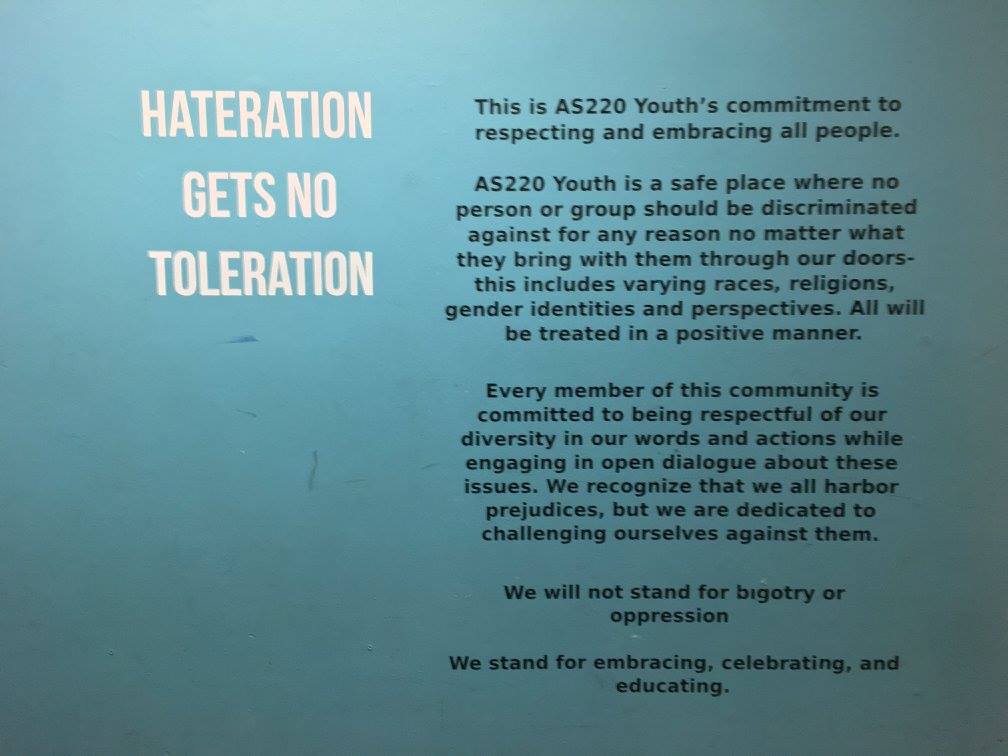
The facilitators leading the discussion were two AS220 Youth coordinators with the presence and charisma required to pique the interest of the teens in the room and keep it. The youth program was designed as a creative incubator for at-risk and beyond-risk young people between the ages of 14 and 21 (the website for AS220 Youth states that it is the “longest-running partnership between a community arts based organization and a juvenile detention facility in the United States.”) The goal is to keep the youth engaged in learning and creative pursuits beyond school and work hours, and their policy boldly states “Hateration gets no toleration” – respect is law.
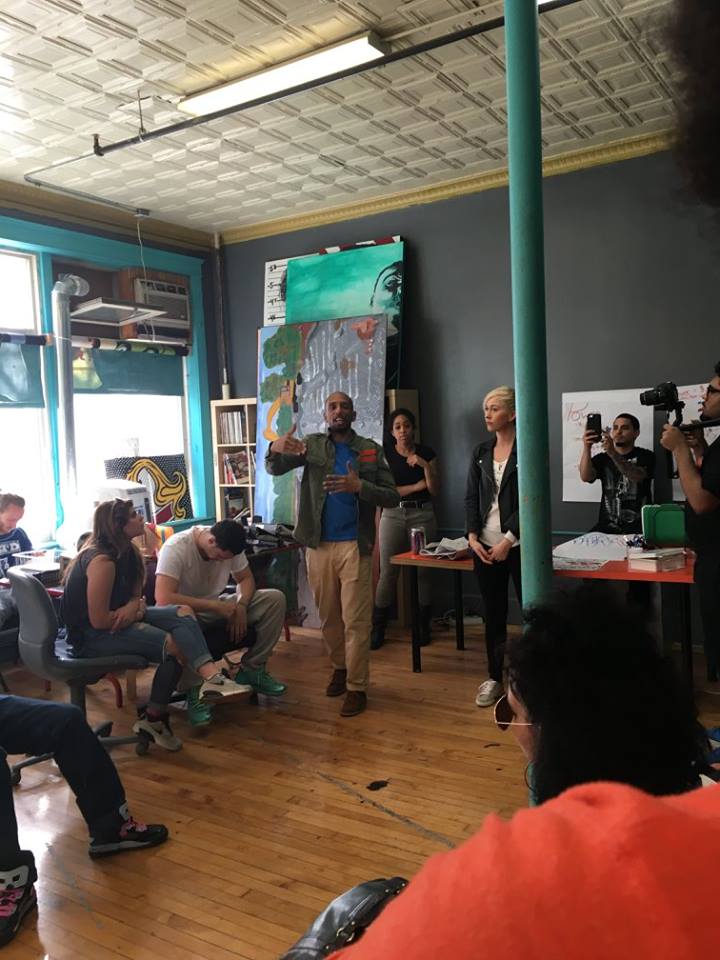
Our group was a small delegation of project leaders in their early to mid-twenties from a non-profit cultural initiative, IZOLYATSIA, based in Kyiv, Ukraine, collaborating with AS220 , an artist-run, grassroots art collective in Providence, Rhode Island, on a cultural exchange program administered by the American Alliance of Museums and funded by the Department of State’s Bureau of Educational and Cultural Affairs. The global partnership, titled, Brighter Worlds: Confronting Violence through Youth-Oriented Media, brought together the talent, curiosity, and passions of local teens from both communities to explore themes of politics and power through science fiction and printmaking. While touring the AS220 art spaces with founder Bert Crenca, we stepped into the room just as one of the facilitators delivered this timely and powerful reminder:
Skip over related stories to continue reading articleWhat are you going to build? That’s the revolution: the revolution is what you build after the resistance movement.
This hard-hitting statement was a key takeaway from a day I spent with the group of socially-conscious, politically-aware project leaders back in April 2016. These young visionaries convened at AS220 for the first of two weeklong project trips (the second was located in Kyiv, Ukraine, a few months later.) During their time together, the project leaders exchanged curriculum plans, personal stories, their thoughts on global politics, the hopes they had for the future of the teen project participants, and many laughs as they worked together to finalize the arrangements for a series of youth art workshops and a final exhibition for Brighter Worlds.
The purpose of the Brighter Worlds project was to involve the high school-aged participants from Providence and Kyiv in political discourse and efforts to confront violence, as well as to provide a cultural exchange opportunity for underserved youth. They used examples of science fiction in pop-media and youth culture (think V for Vendetta, 2005) as launch pads for larger conversations.
Discussions about power and conflict are tough no matter the situation – even more so when engaging youth. The project hoped to open dialogue about political and social discord with examples pulled from popular science fiction. However, there were some who still maintained reservations about using this particular genre as a tool for frank discussions with youth. In those instances, the project’s response was direct:
[blockquote cite=”Project Description from AS220’s website”]Critics of the genre often claim that themes of ultra-violence, political and social conflict are ‘unsuitable for young people’… Violence, racism, and political conflict are unsuitable for young people, but it is inherent to their daily lives.[/blockquote]
Nothing could be more important to the continued progress of equality than to interest young people in thinking about how power dynamics influence their own relationships, communities, and society at large. Through this project, AS220 and IZOLYATSIA recognize the significance of opening this dialogue in order to help their own respective communities process the mass displacement that occurred with the political tumult in Ukraine and to understand the racial tensions within the US that have been amplified recently by the high-profile cases of police brutality.
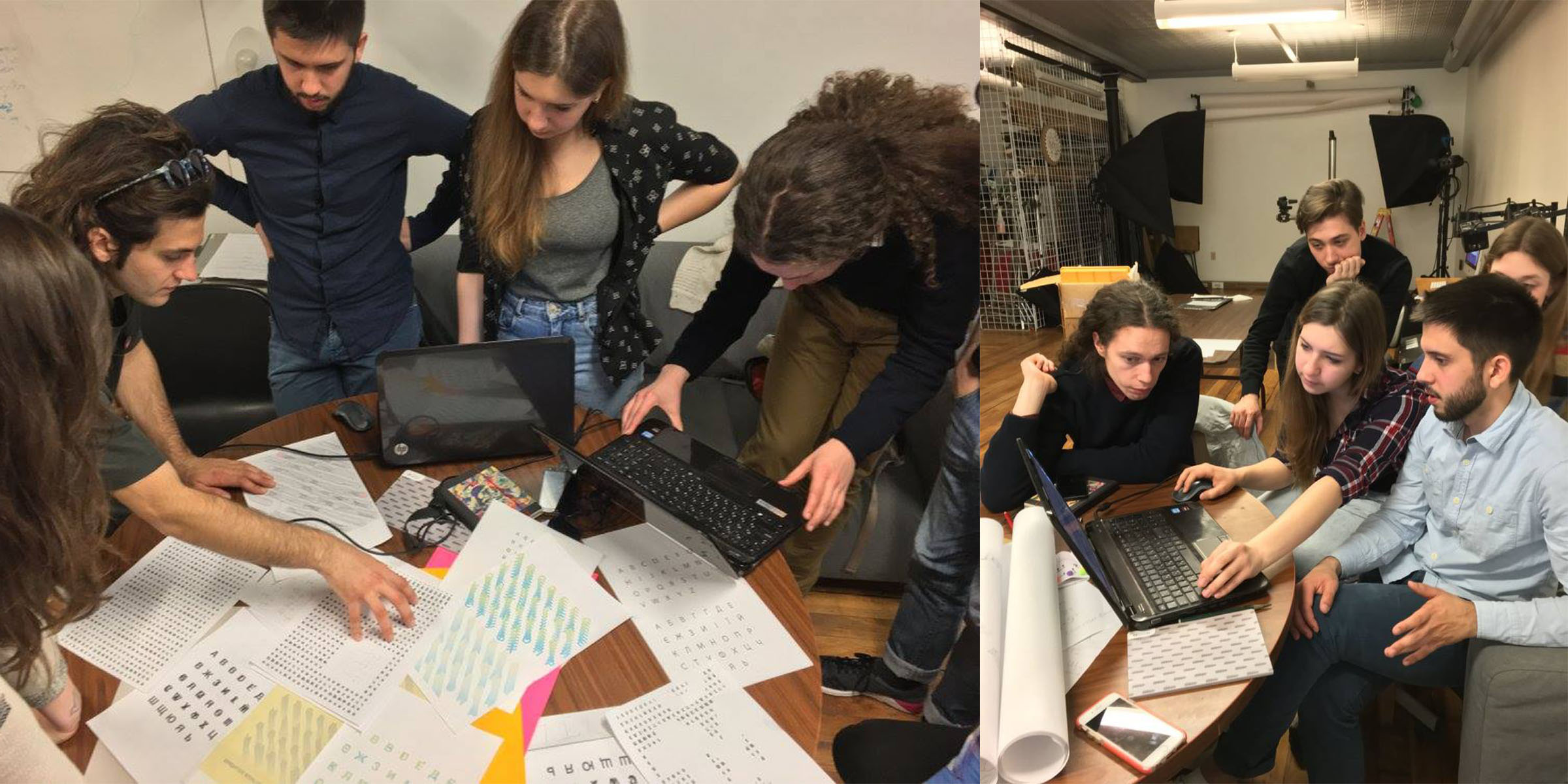
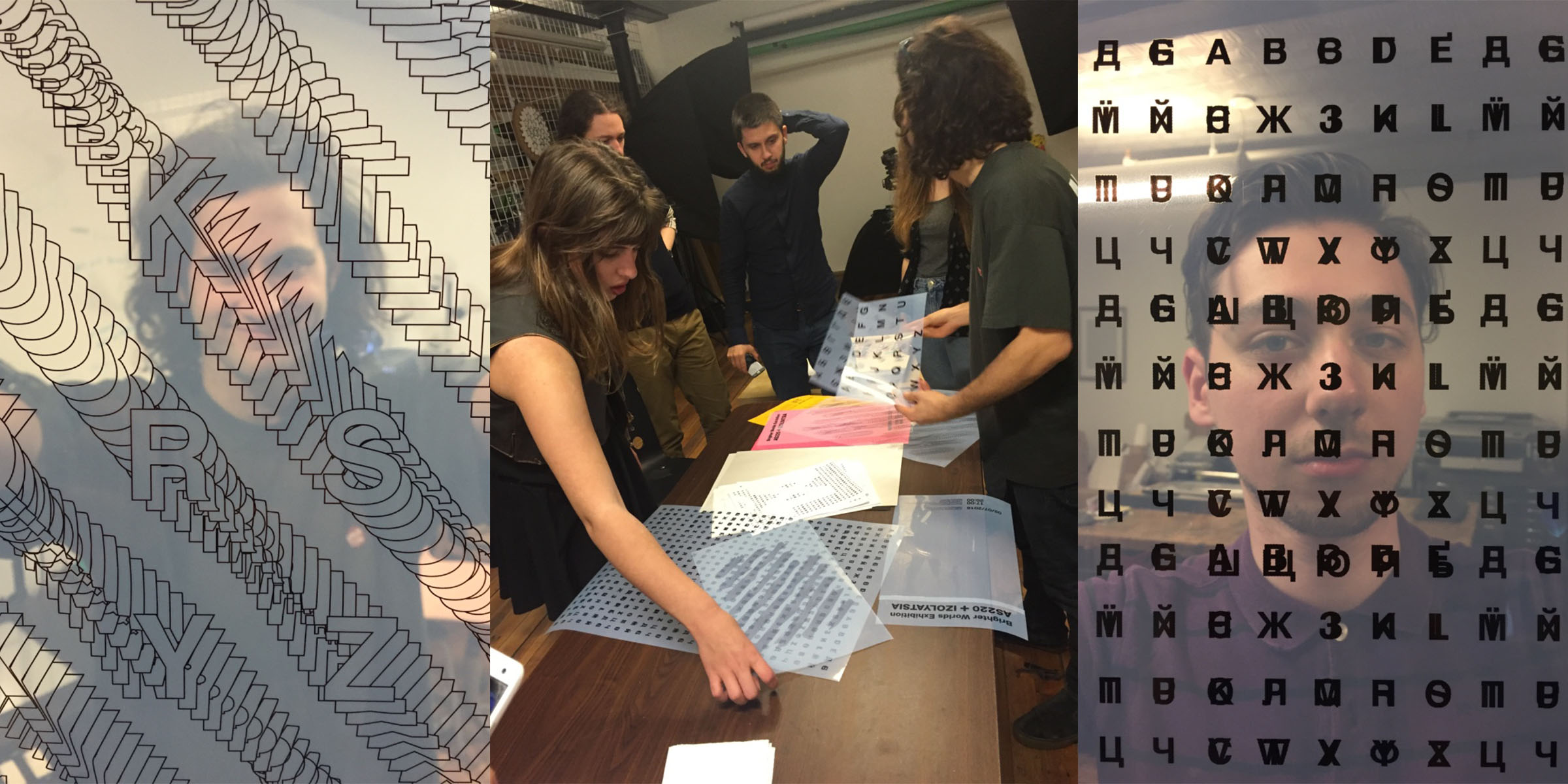
Equally important to both organizations was to draw connections between the two communities and build relationships. By sharing stories over group Skype sessions, collaborating on the design and production of posters for the final exhibition, and even swapping playlists for fun, the project’s participants enhanced their cultural understanding, continued to develop their capacity for empathy, and, most importantly, made friends within their local communities and across two continents.
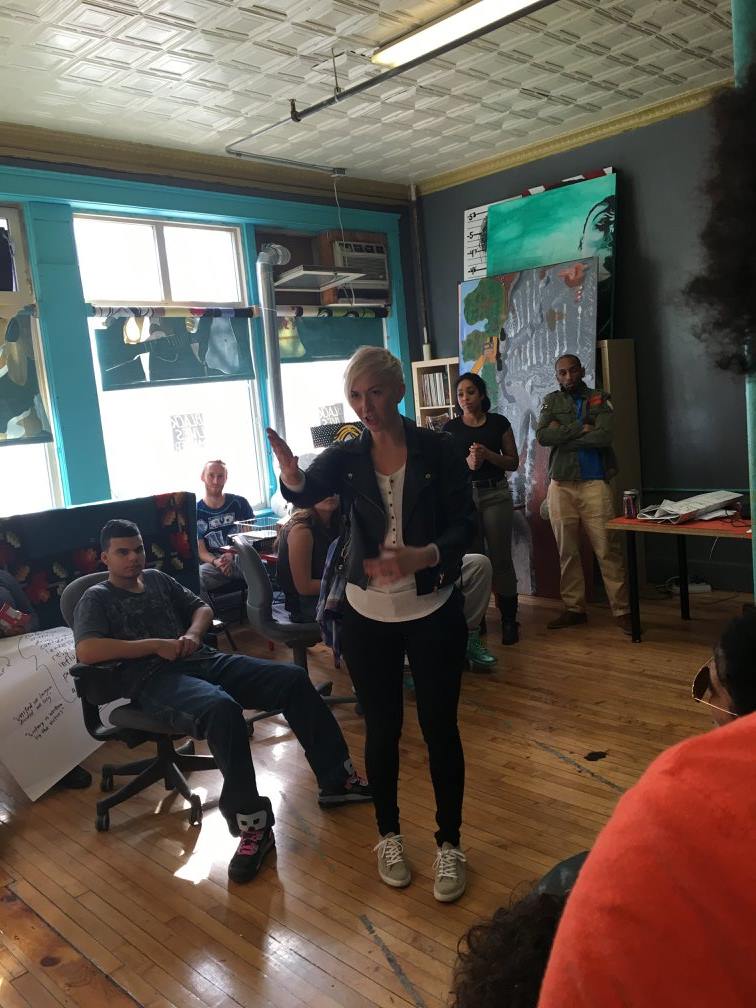
This is why the short amount of time we spent in the meeting was so poignant for everyone involved. For the Ukrainian project leads, it was a chance to connect with the students in the room by sharing their own personal experiences with political discord. For one, in particular, this meant sharing that his whole family had been uprooted from the town they grew up in; displaced by the conflict with Russia. For another, it was admitting that she wished she had found her voice earlier.
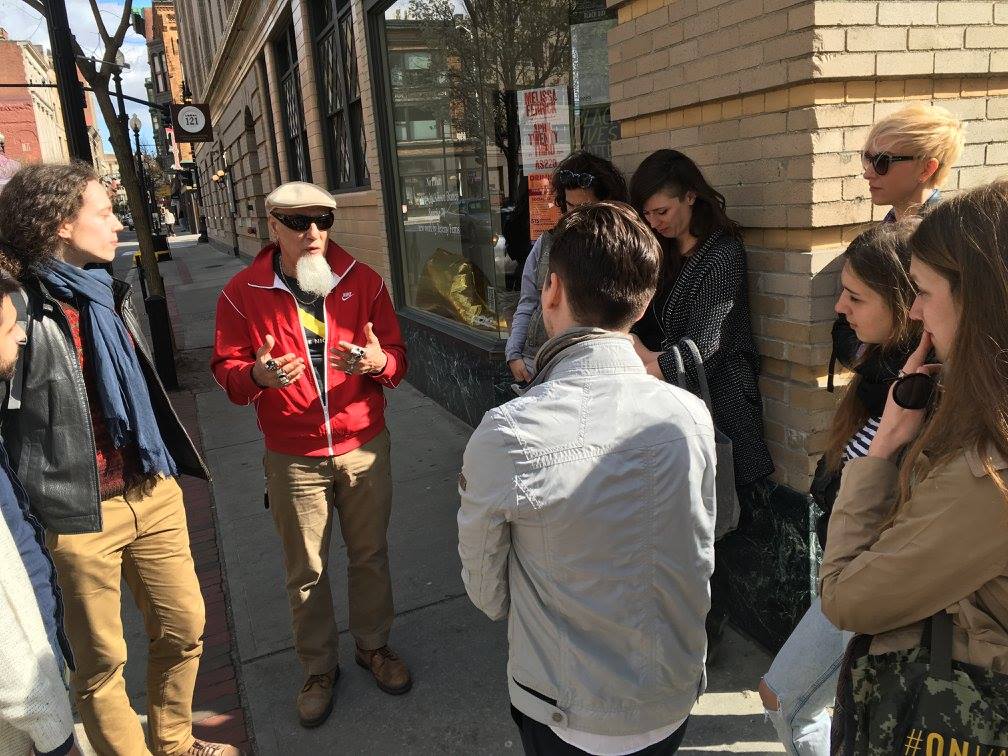
[blockquote cite=”Bert Crenca, Founder of AS220″]Freedoms are like muscles; if you don’t use them, they atrophy.[/blockquote]
Oksana Kyrychenko, the Project Coordinator from IZOLATSIA made a few thought-provoking comments to the group about never ceasing to question those in positions of political power, particularly, when you feel that your freedoms are being challenged – echoing the words spoken by Bert Crenca, earlier that day while standing outside of AS220’s main gallery: “Freedoms are like muscles; if you don’t use them, they atrophy.”
To me, the dialogue truly represented the purpose of engaging in global projects: sharing experiences for mutual learning. It reinforced just how important it is to provide youth with opportunities for cultural exchange. Listening to the Ukrainian and Rhode Island participants swap stories and ideas with their peers seemed to cement the notion, for all, that shared common experiences bind us in spite of cultural or language barriers, and that the struggles and triumphs of our own communities are linked to those of our friends abroad.
This also demonstrates why global exchange is so important for cultural institutions and community art spaces. Much like museums, as incubators of learning and empathy, these places have a unique opportunity to act as forums. By creating safe spaces for dialogue and discussion, they can foster global perspectives and reinforce important social skills – that may, or may not, be effectively taught at home or in the classroom. These tools are critical for building relationships and participating in a globalized world.
With all eyes now focused on the center of the room, the facilitators riffed off of their Ukrainian visitors’ stories and shared one last message with the rapt audience: “Power is the ability to control circumstances… Take control of your own life and do something meaningful for the world.”
“Brighter Worlds: Confronting Violence through Youth-Oriented Media” is a Museums Connect project. Museums Connect is an initiative of the US Department of State’s Bureau of Educational and Cultural Affairs that is administered by the American Alliance of Museums.









Comments